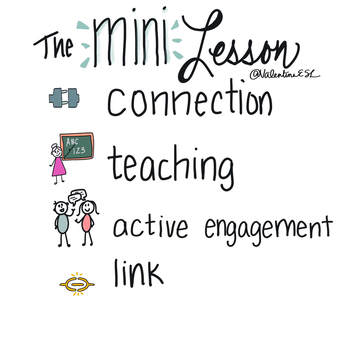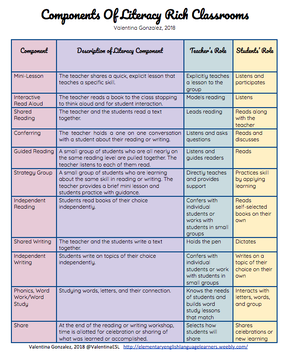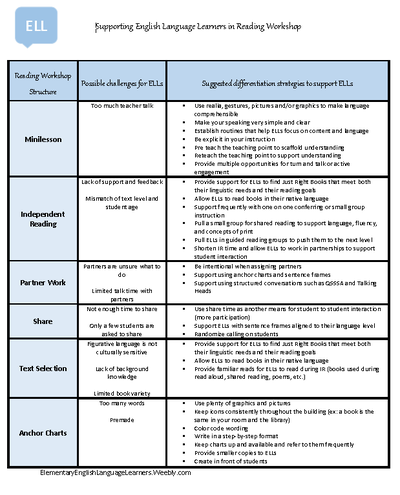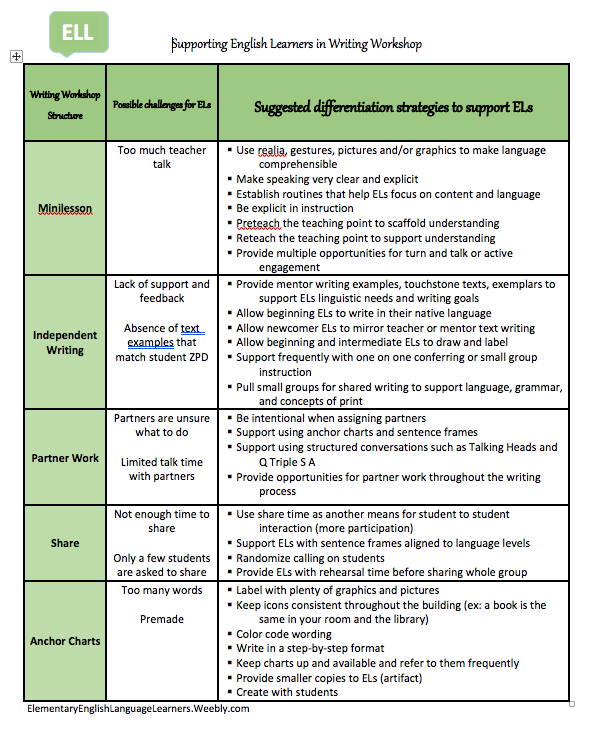|
In the last post the focus was an overview of literacy components. This article will zoom in on just the mini lesson. The goals are to:
0 Comments
The next few posts will be related to one another regarding the topic of literacy instruction as it pertains to English learners. The focus will be specifically on supporting English learners in English Language Arts classrooms and accommodating instruction and materials to promote growth and success.
But let's begin by setting the foundation for our work with some common definitions or terms. As a co-teacher, you might wonder how co-teaching fits in with the components of literacy. Or you might be a main stream (general education) teacher that has a co-teacher and you wonder how to best utilize two teachers in the room during reading and writing instruction. Many ESL teachers co-teach in classrooms during reading and writing blocks. It's important to know which co-teaching approaches fit best with each component of literacy instruction.
These supporting documents have been in high demand and are in various blog posts on this blog. So I decided to put them all in one post for easy access. This is a one stop shop where you can find the supporting documents to shelter instruction in the content areas. Please feel free to share them with your teacher colleagues as they are meant to help all educators and students. These supports are not just for English Language Learners. ALL learners who need extra help will benefit!
English Language Learners benefit greatly from the structure of Writing Workshop. However, there are a some small tweaks we can make as teachers to scaffold instruction for ELLs and truly make the experience advance both literacy and language. ELLs vary vastly. Some are born in the United States and experience similar American cultures and traditions. Others have little formal education or come to America with drastically different cultures and traditions. Factors such as age, intrinsic motivation, proficiency in native language, and educational background also affect the student's development of English. For these reasons and more, we have to take a good look at each child individually and know how to adjust the Writing Workshop so that the child will grow as a writer because of the workshop structure. What I noticed in classrooms is that teachers are embracing the Writing Workshop. But some feel they can't vary from the pages of Units of Study or other programs they use. This isn't true. We have to remember, we are teaching students first. If we keep students at the forefront we can't go wrong. With sequenced, targeted, and focused support in writing, ELLs can make leaps and bounds! Here is how I support English Language Learners in Writing Workshop. Download is available below the picture.
1. Model
Each kid benefits from seeing how to write before they DO the writing. BUT for English Learners this is even more important because language structures may vary from their native language. For example, if I want my students to write about themselves describing their age, I might show them that in English we write: " I am nine years old." This is different from other languages like my native language where a person might say, "I have nine years." Modeling what we expect from students gives them a clear goal for their writing. 2. Be Explicit |
Categories
All
|
||||||||||||||||||||||||||||||













 RSS Feed
RSS Feed
